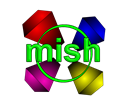Glowstick FAQ
Categories
GLOWSTICK FAQs
What makes them work?
Light is generated by a chemical reaction called “chemiluminescence". Typical glowsticks as chemical reactants use: a hydrogen peroxide solution (which is called the "activator") a solution of phenyl oxalate ester and a fluorescent dye (which makes the colour). The activator is stored in a thin glass capsule. When the glass capsule is broken (by flexing a glow stick) the activator is released, and mixing the components (shaking the glow stick) initiates the reaction. Depending on components used, the chemical reaction can last (glow sticks can glow) from a few minutes to many hours.
How do I activate them?
Simply Bend & Shake! Bending breaks the internal glass capsule, and shaking spreads the glow evenly. Don't bend activated glow sticks any more as excessive bending may break the plastic tube and result in leakage.
How long do they last?
The glowsticks we supply will glow 6 to 12 hours, depending on size, colour and type.
How to turn them off?
Glowsticks cannot be turned off once activated. In that way they are like many toddler's musical toys.
What affects the glowing time?
Temperature and age. Higher temperatures will make the glow stick glow brighter but will shorten the glow time. Lower temperatures do the opposite. Changes of temperature between 15 – 28 deg do not produce substantial changes in glow time.
Can they be re-charged again later?
No, there is no way of re-charging or re-activating.
Are they waterproof?
Yes, glowsticks are waterproof and can be used underwater for night diving, surfing or pool parties. Be tidy kiwis, don't leave them in the water.
What is the shelf life of glowsticks?
Stored correctly in a dark dry container (ie box they came in) glowsticks can last well for 2-4 years. Prolonged exposure to light and humidity will shorten the glow time or can make glowsticks inactive.
Are they safe?
The liquid light source is non-toxic, no heat or harmful radiation is produced.
SAFETY NOTE: The activated liquid, while non-toxic often contains tiny pieces of glass which may cause injury should the glowstick be punctured or split open. The liquid can permanently stain clothing or furniture and can cause skin or eye irritation. Some glowstick products also contain small elements, posing choking hazards.
glowsticks are not suitable for children under 5 years of age without adult supervision.
Do not puncture or split the glowstick open. They make a mess, stain stuff, and the insides can hurt.
Here's a trick - even 'dead' glow sticks will continue to shine if they are placed under a black light (UV)!
GLOWSTICK USES
Glowsticks have been used for a variety of different reasons, but are mainly recreational items found at club settings, rave parties and festive gatherings. Glowsticks have also made great stocking stuffers, fundraising items and souvenirs at fireworks displays.
Although glowsticks appear to be used primarily as fashion accessories, they actually provide safety for individuals in a number of situations too. Police officers often use glowsticks to navigate traffic on dark streets and the Military have been known to use them in training.
Here is a list of popular uses for these glowing treasures:
· Parties (raves, dances, birthdays, school discos)
· Gatherings (fireworks displays, outdoor night parties)
· Diving (underwater navigation, no batteries or electricity needed)
· Camping (night navigation, land markers)
· Motoring (emergency indicators on dark roads)
· Work places (some sources of light that are electrical are not permitted)
· General emergencies (markers for power outages)
· Fundraising (excellently marketable item for promotional sales)
· Reflectors for children's safety on dark nights (Halloween, 4th of July)
· Weddings (to wear or use as decorations)
 Loading... Please wait...
Loading... Please wait...